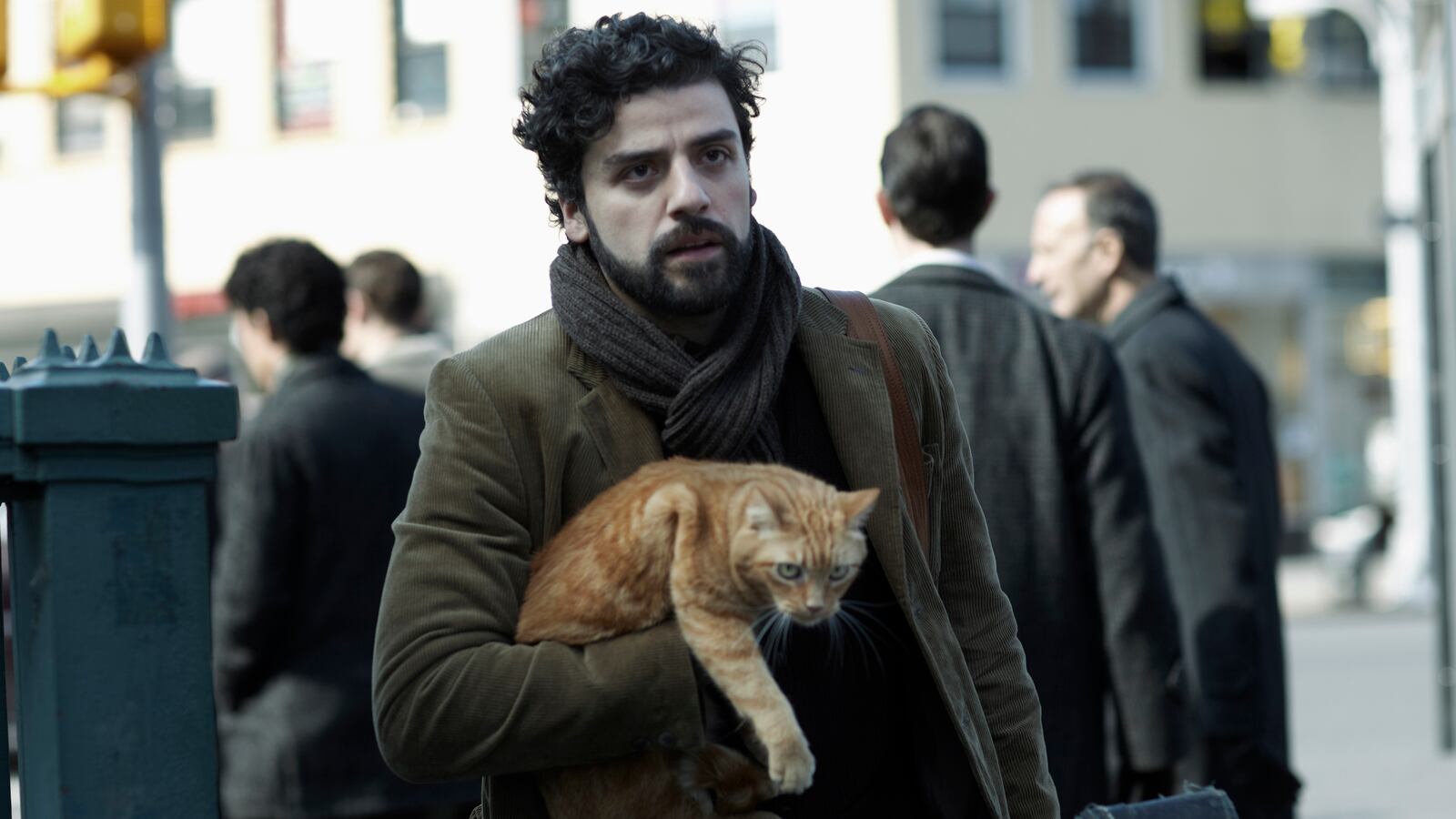It’s easy to see why the Coen brothers were drawn to the life of folksinger Dave Van Ronk (1936-2002) as the inspiration for their new movie Inside Llewyn Davis. He is a figure that resembles many of the filmmakers’ main characters: earnest to a fault, intelligent but guileless, captive to large and inexplicable forces, and, in the end, never quite capable of expressing himself as clearly or as loudly as he would like. But, also like a Coen brother’s character, he was at the center of amazing things; he was one of the lynchpins of the Greenwich Village folk movement of the 1960s. His memoir, The Mayor of MacDougal Street, first published in 2006 and now reprinted to coincide with the release of the movie, is one of the most valuable documents we have about what he calls “The Great Folk Scare,” and offers a clear-eyed picture of an often romanticized age.

Van Ronk established himself in Greenwich Village long before he had a real home there. Drawn to the burgeoning folk scene centered around Washington Square Park as early as 1951, when he was fifteen, he spent most of his time crashing on various floors and couches around Manhattan, occasionally visiting his family in the outer boroughs to change his clothes and try to borrow some money. By the time he was seventeen, he had dropped out of high school and was cobbling together enough money through various jazz gigs and other odd jobs (he would occasionally ship out with the Merchant Marine) to pay double-digit rent in buildings that today could be sold for many millions. He had dreams of being a proper jazz musician (he was born several years too early for idea of “rock star” to yet exist as a brass ring) but soon, mostly out of concerns for increasing his earning potential, he made the switch from jazz to folk, and from tenor banjo to fingerstyle guitar, and began grinding out performances for any audience that would listen.
When the rapidly growing folk scene finally attracted the attention of the nation in the early 60s, he was already a seasoned veteran of almost every small stage in New York, and many grubbier rat-infested performance spaces for which an actual stage was out of the question. His memoir is filled with war stories about what it meant to be a struggling musician in New York at the time. One of his bases of operation was the Gaslight Cafe, which “held about 110 people according to the fire codes, though with a shoehorn on a good night you could squeeze in 125 or 130. And there was this weird rule that no applause was permitted, because all these old Italians lived on the upper floors and they would be bothered by the noise and retaliate by hurling stuff down the airshaft. So instead of clapping, if people liked a performance they were supposed to snap their fingers. Of course, along with solving the noise problem, that also had some beatnik cachet.”
If you’ve heard of Van Ronk before, it’s most likely through his connection with Bob Dylan. Van Ronk served as something like a mentor when Dylan first got of the bus from wherever it was he claiming to be from at the time, and the younger singer looked up to him, at first, as the pinnacle of artistic achievement, saying in an interview in 1964 “I once thought the biggest I could ever hope to get was like Van Ronk.” But just a few months after they first met in another basement club (called Café Wha?), Dylan’s star was rising, and their relationship began to fray, first with Dylan recording Van Ronk’s arrangement of House of the Rising Sun without his permission, and later deigning to offer the veteran career advice. Van Ronk recalls: “He was saying things like ‘Why don’t you give up blues? You do that, and I’ll produce an album on you; you can make a fortune.’ He wasn’t making a lick of sense, and I finally pushed back my chair and said, ‘Dylan, if you’re so rich, how come you ain’t smart?’ And I walked out.”
Van Ronk would never even approach the level of success that Dylan enjoyed, and it’s not entirely a mystery. If you were building someone in which to package a movement and sell it to the public, he wouldn’t look like Van Ronk. Tall in a more ungainly way than graceful, paunchy, and with an affected beard something less than romantically rakish, he would never be mistaken for a teen heartthrob in the way that Bob Dylan could. His voice, too, was largely unmarketable. But he was also a man cursed with principle, and his refusal to dilute what he considered to be the decency of folk music meant that he spent several portions of his life deeply in dept. (He also suffered from bad luck in the matter of royalties, a particularly tricky matter in folk music where the real author of a song is sometimes hard to ascertain. He tells a story of being stopped on the street by Jackson Browne, who happily told him that he had just recorded Van Ronk’s “Cocaine Blues” for his most recent album. There was just one problem, which Browne hadn’t realized: Van Ronk hadn’t written the song. The considerable royalties would go elsewhere.)
It was surely Van Ronk’s star-crossedness that has attracted the Coen Brothers. The movie draws from the book the most ironic or heartbreaking set pieces, such as the singer’s sleepless hitchhiking journey to the Gate of Horn club in Chicago. The club owner there, it’s assumed by both Van Ronk and his fictional counterpart, had received a recording of his songs, and although an offer to gig there had not been forthcoming, a face-to-face meeting would surely be the best way to force the issue, or at least the most dramatic. But it turns out that the manager had received no such recording, due to some middleman botching the exchange. All, it seems, is lost. Then, fate throws down a rope ladder: how about a private audition, one on one, right now? It’s one of the most affecting scenes in both the book and the movie; the singer baring his soul, carrying the standard of his beleaguered art, riding out to meet his fate in decisive action. If you’re familiar with the Coen brothers, or if you’re not familiar with Van Ronk, you can probably guess how it turns out.






